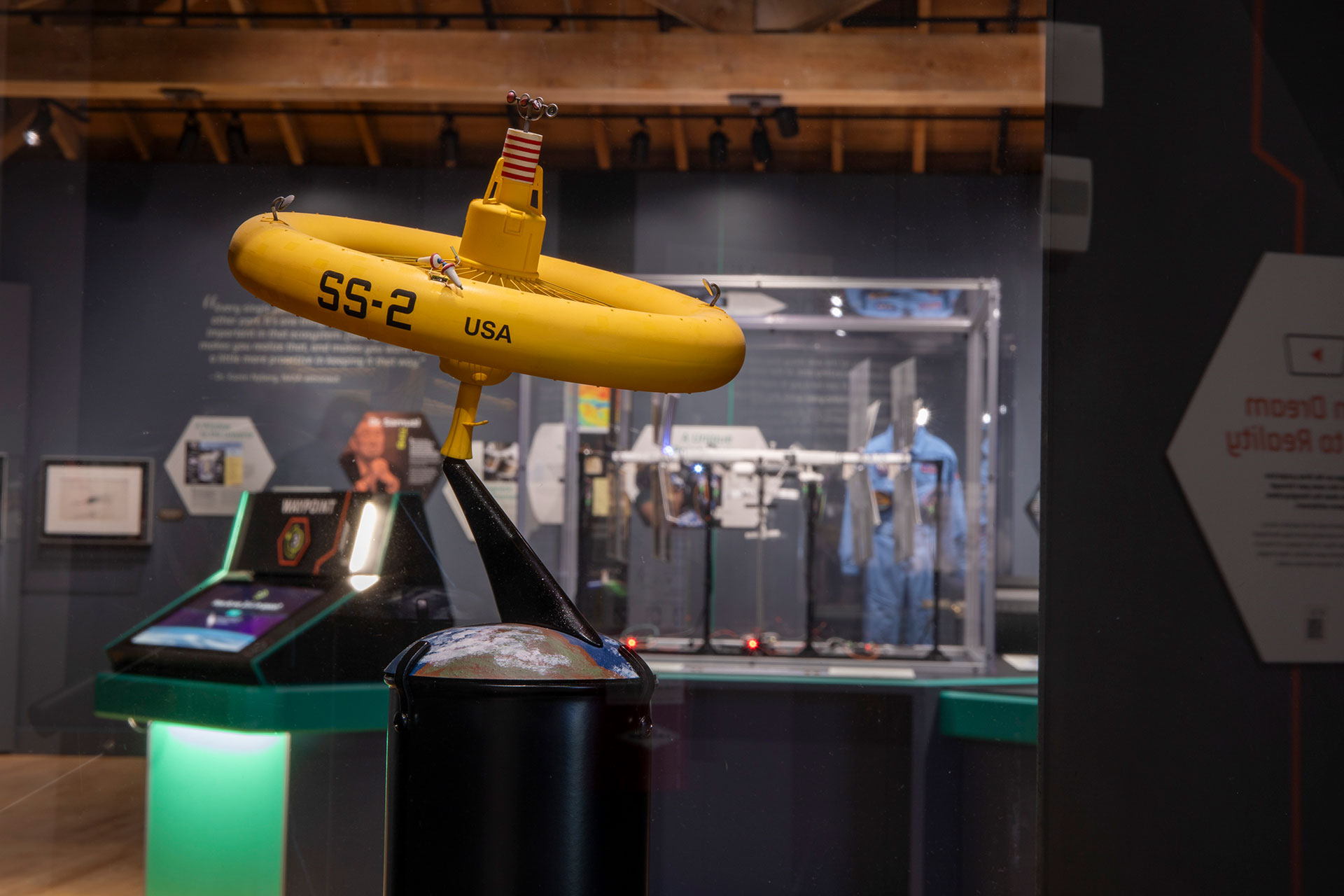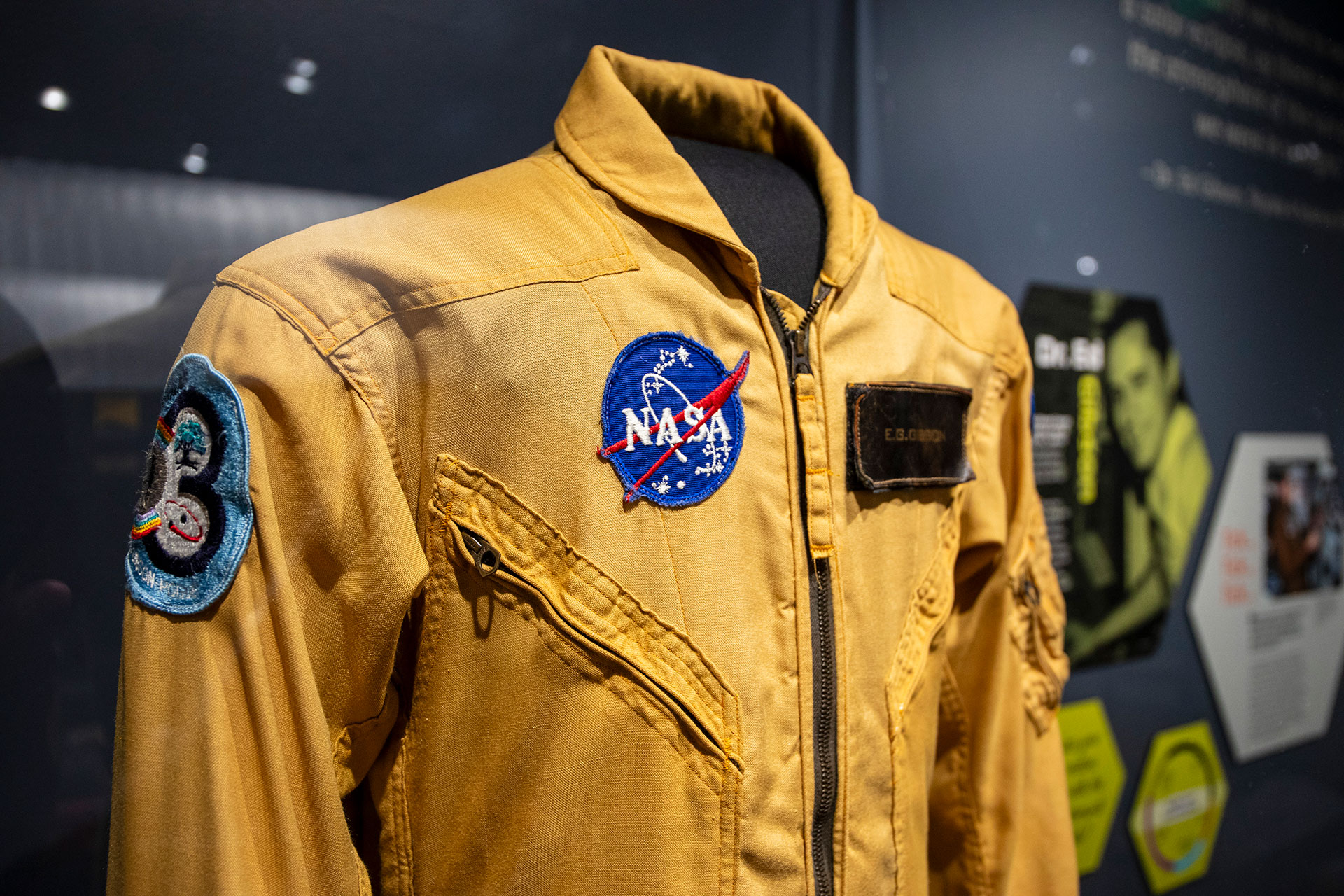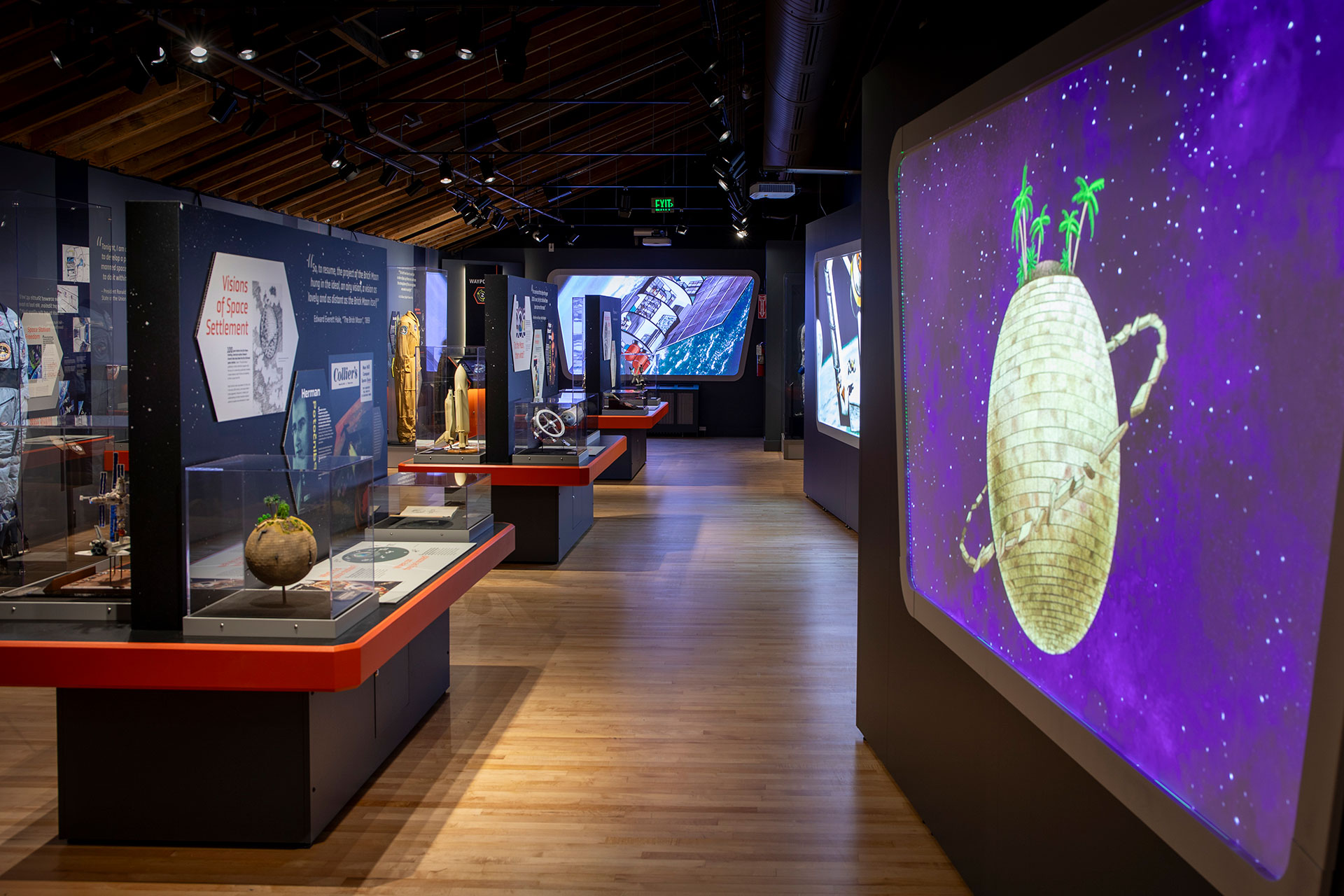New space stations exhibit invites public to find 'Home Beyond Earth'
'We really focus on examining the human fascination with living beyond Earth.'

A new exhibit about space stations turns the focus from how astronauts live in space to how millions of people may do so in the years to come.
The past, present and future of humans residing in orbit is explored in "Home Beyond Earth," a temporary exhibition now open at The Museum of Flight in Seattle. Spread over three galleries, more than 50 artifacts bring the subject to life, augmented by large digital projections and interactives.
"We really focus on examining the human fascination with living beyond Earth," said Geoff Nunn, curator and exhibit developer at The Museum of Flight, in an interview with collectSPACE.com. "For 'Home Beyond Earth' we dove into the cultural implications of living in space, both in terms of how the history of space stations connects with our cultural priorities here on the ground and, looking ahead, how the rise of commercial space stations and a growing community in space is going to change and affect that."
Related: NASA wants to help private space stations get off the ground
"Home Beyond Earth" features scale models of every type of space station that has been launched in orbit, as well as many of the fictional and proposed concepts. Visitors can see "The Brick Moon," writer Edward Everett Hale's 1869 artificial world that is credited as the first literary description of a space station, next to models of the habitable wheels designed for Walt Disney's 1955 "Man and the Moon" television special and Stanley Kubrick's 1968 movie "2001: A Space Odyssey."
"And, as well, upcoming stations," said Nunn. "We have models from Orbital Reef and a model from Axiom Space that are on display, highlighting these upcoming commercial stations."
More than miniatures, "Home Beyond Earth" also showcases objects that have enabled life on orbit, many of them having been flown in space. These artifacts include objects that if left on Earth might otherwise be considered mundane, such as clothing, drinkware and food.
"It is like the things that you take for granted every day, like brushing your teeth, taking care of your hair, wearing contacts — all of these things are just muscle memory on Earth, I don't think anything about them. I can do them almost in my sleep," Dottie Metcalf-Lindenburger, a former NASA astronaut who spent ten days at the International Space Station (ISS) in 2010, said during a preview of the new exhibit. "But when I was in space, I had to be a little bit more cognizant of it. For example, I have long curly hair, and in space, you have to comb it into a piece of grey tape and then take the gray tape and put it into the dry trash. I never would have thought about that."
"Home Beyond Earth" exhibits one of the flight units for the space coffee cup that was created for the space station. Like the care needed to contain astronauts' hairs from floating loose, liquids need specially shaped containers to keep hold and direct the contents into the user's mouth.
"We also have inflight garments from every every flown space station program, with the exception of [China's] Tiangong," said Nunn. "So we have a [Soviet] Salyut inflight garment, we have Ed Gibson's Skylab 4 flight suit, we have Wendy Lawrence's 'penguin' suit for when she was training for [Russia's] Mir and then we have Chris Cassidy's inflight garment from ISS."
The theme of "Home Beyond Earth," though, is not on the residencies that have come before but on the how, why and where visitors may find their own place in space. Guests use digital tokens to shape their journey through the exhibit while personalizing their imagined future life on a space station of their choosing.
"We're doing a lot with with RFID [radio frequency identification] technology," Nunn said. "We have what we're calling the 'Passport to Space,' where visitors get a card and then they go through five stations to create their own journey."
After choosing a name and avatar to represent themselves, guests pick the size and shape of space station they would like to live on, and what they would like to do once there.
"Finally. we populate our fictional 'Museum of Flight Space Station' and your avatar shows up," said Nunn. "The buildings on that station change as different people go through based on what they said their priorities were, what jobs they wanted to do and their other selections."
"We are trying to get people to begin thinking about their own future in space," said Nunn. "If we are really going — as commercial companies now talk about — to get a million people living and working in space, well, that's the population of Dallas, Texas. That is a very different space community from the one with 10 permanent residents, as we have now."
See more photos from the "Home Beyond Earth" exhibit at collectSPACE.
Follow collectSPACE.com on Facebook and on Twitter at @collectSPACE. Copyright 2024 collectSPACE.com. All rights reserved.
Breaking space news, the latest updates on rocket launches, skywatching events and more!

Robert Pearlman is a space historian, journalist and the founder and editor of collectSPACE.com, a daily news publication and community devoted to space history with a particular focus on how and where space exploration intersects with pop culture. Pearlman is also a contributing writer for Space.com and co-author of "Space Stations: The Art, Science, and Reality of Working in Space” published by Smithsonian Books in 2018.
In 2009, he was inducted into the U.S. Space Camp Hall of Fame in Huntsville, Alabama. In 2021, he was honored by the American Astronautical Society with the Ordway Award for Sustained Excellence in Spaceflight History. In 2023, the National Space Club Florida Committee recognized Pearlman with the Kolcum News and Communications Award for excellence in telling the space story along the Space Coast and throughout the world.




